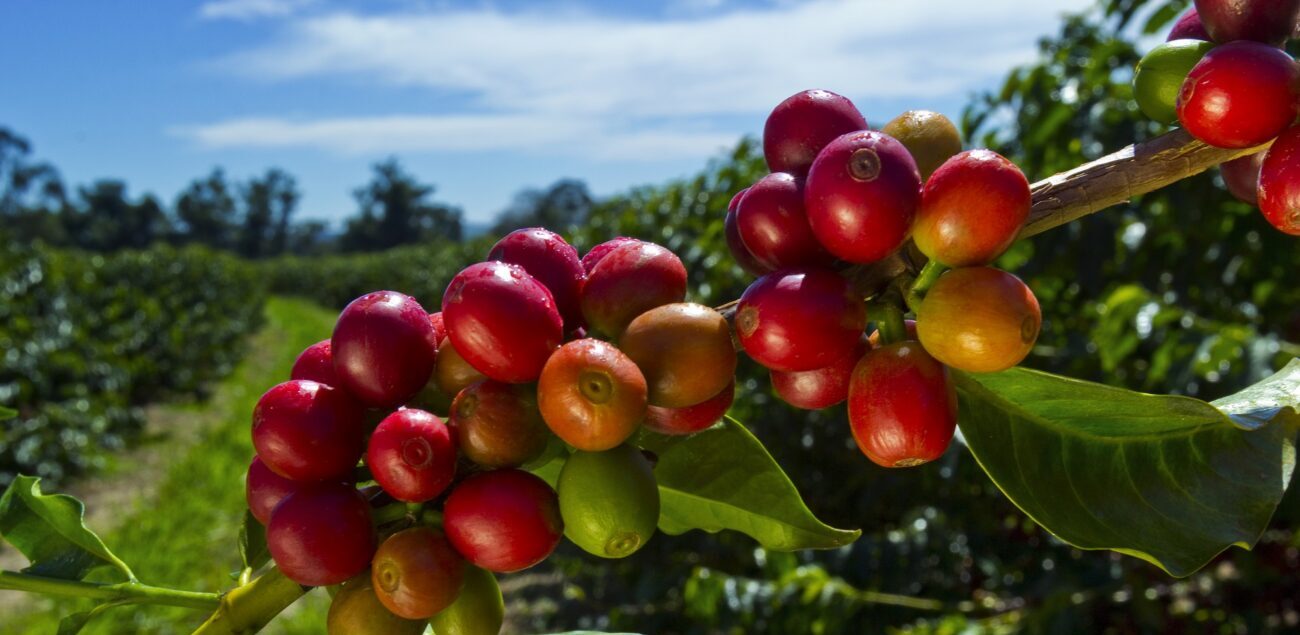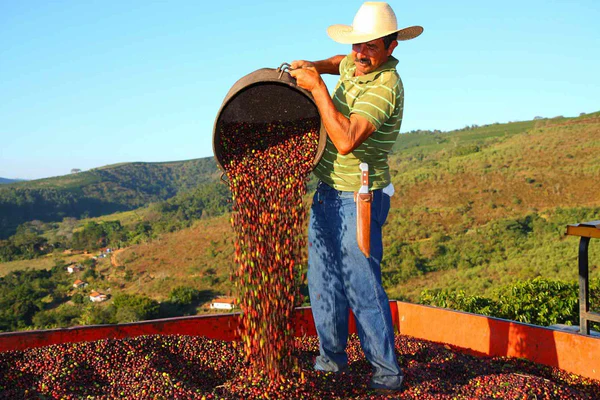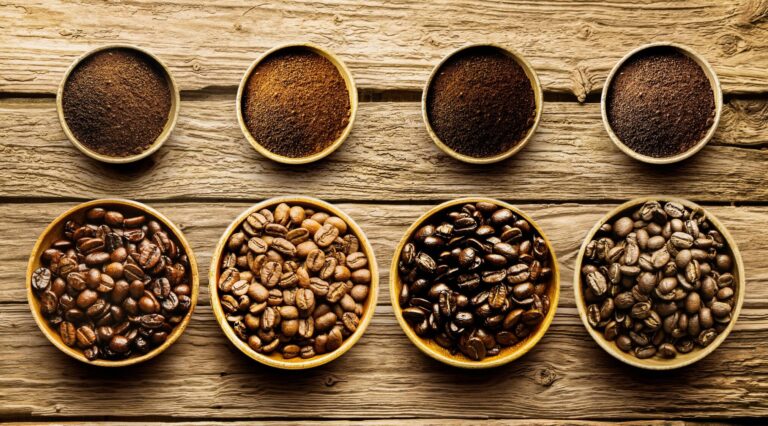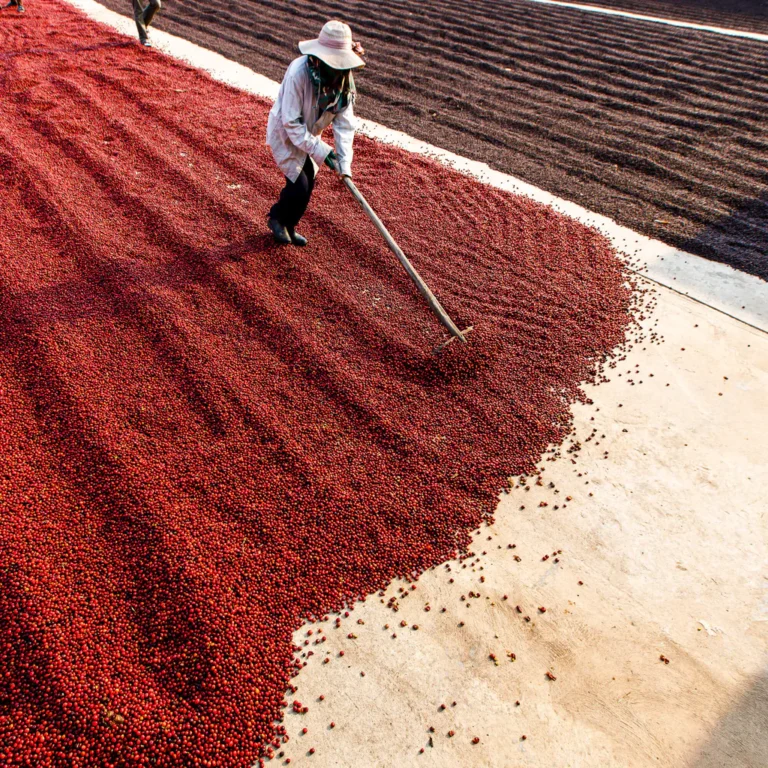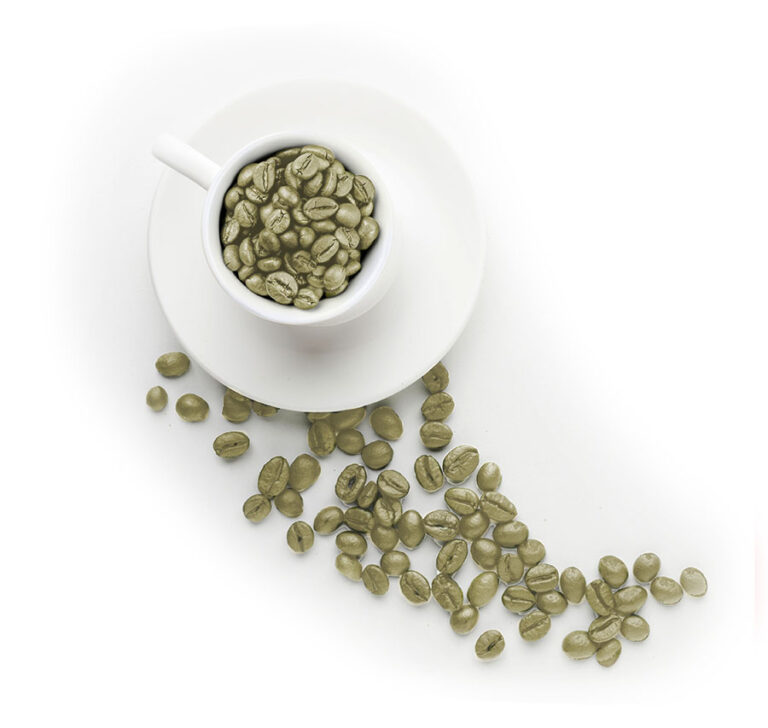Coffee is thought to date back to 800 A.D., where it was discovered by 9th century goat herders. It was said that they noticed their goats eating the plant and afterwards it appeared like they were ‘dancing’. Fascinated by the results, the goat herder tried them himself and discovered that it made him enthusiastic too.
Despite it being called a ‘bean’, coffee is actually a fruit. The ‘beans’ grow on a bush and are found in the centre of a berry, known as a coffee cherry.
The coffee tree (or technically plant) is an evergreen shrub which belongs to the Rubiaceae family and grows in countries all over the world between the tropic of Cancer and Capricorn. Once the tree is about three years old it will start producing coffee. There are many different types of coffee species with the two most popular being Arabica and Robusta.
Arabica (Coffea Arabica) accounts for 75% of the world’s total production. Robusta (Coffea Canephora), which is mostly grown in West Africa and Asia (especially Vietnam) has a much bigger yield compared to Arabica and a higher caffeine content. Both species can grow up to 10 meters tall but are usually kept low for harvesting reasons. Arabica is self pollinating and the Robusta tree requires cross pollination.
Coffee cherries are picked (ideally when they are fully ripe), and then, most often, they go through a process called de-pulping, which removes the thick skin of the fruit. The seed of the coffee cherry is covered in mucilage, a sticky, sweet substance, which is also removed through varying processes.
The coffee seed in the centre of the cherry is then dried, either on raised beds or mechanical driers, to around twelve percent moisture content. Normally green coffee is rested for a couple of months, and then shipped around the world to be roasted.
Coffee Bean Varieties:
Typica – Typica is considered the original base for Arabica and many other varietals have been formed from this. It grows to 3.5 – 4 meters in height and has a very low production. Typica is considered to deliver excellent coffee.
Bourbon – Similar quality of coffee as Typica, Bourbon originates from the Reunion Island and produces slightly more coffee than Typica. Best results are achieved when Bourbon is grown around 1,000 – 2000 meters altitude. Really delicious coffee!
Caturra – This smallish tree requires a lot of TLC but in return Caturra gives higher yields and a good cup quality. This is a mutation of Bourbon. Caturra can grow relatively low (450 – 1,700 meters) and can grow at higher altitudes but will result in lower production volumes.
Catuai – A cross between Mundo Novo and Caturra, this tree is short and keeps hold of the fruit so is liked by farmers who are exposed to strong winds and rain. Catuai is widely planted in Brazil.
Mundo Novo – An almost Brazilian tree as it was first discovered in Brazil in the 1940’s and it is well suited to the altitude of Brazil. This natural hybrid between Typica and Bourbon has a high yield, about 30% more than Bourbon, and has a high resistance to disease.
Heirloom – This is kind of a catch-all name for the ancient varietals as there are so many… in Ethiopia for example, there are believed to be thousands of different varietals!
Maragogype – Characterised by the very large size, Maragogype is a mutation of Typica which was discovered in Brazil and has the nick name ‘Elephant beans’.
There are many more…

